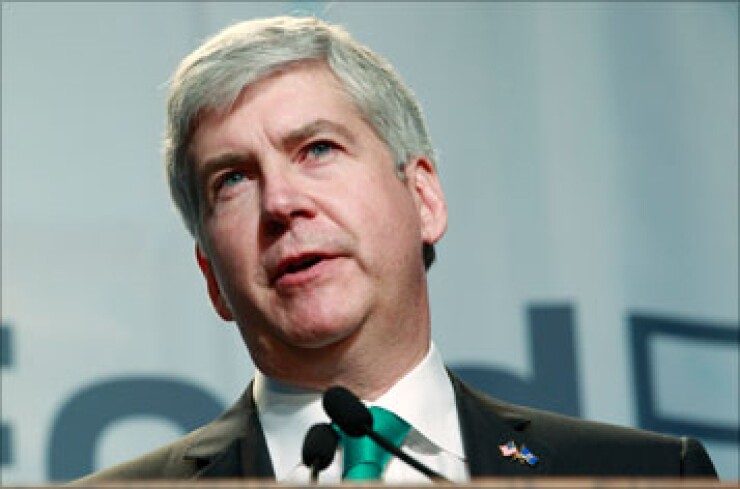
DALLAS – Michigan's Republican legislative leaders and Republican governor have settled on a budget framework that cuts funding for a proposed state water infrastructure fund to offset dwindling tax revenue while leaving intact $165 million in proposed aid for Flint.
The agreement reached Tuesday follows the announcement last week of a $333 million budget gap that was triggered by a downward revision of revenues expected in fiscal 2016 and fiscal 2017, which begins Oct. 1.
"The framework has been agreed to – the spending 'targets' were set yesterday by the appropriations chairs and the governor," said Anna Heaton, spokeswoman for Gov. Rick Snyder.
Heaton said that the amount for resources going directly to Flint for water crisis recovery remains the same as what Snyder requested in his budget proposal unveiled in February, with one stipulation.
"He originally asked for $195 million, but the Legislature opted to do a supplemental for $30 million that same month to credit residents' water bills because we felt it was an immediate need," said Heaton. "So it is $165 million now, as the $30 million has already been allocated to the city."
Heaton said the administration is confident the budget will be finalized and signed into law next month as it has for the past five years.
Kurt Weiss, a spokesperson for the state's budget office, said the proposed statewide water infrastructure fund would bear the brunt of investments being trimmed to balance the books.
"The recommended budget called for $165 million in statewide infrastructure funding, that number is now reduced to $5 million to allow for recommendations on how to approach the statewide need."
K-12 education spending will remain in line with Snyder's proposal with per-student increases ranging from $60 to $120 but state universities' operations funding would rise roughly $40 million, or 2.9%, instead of the $60 million, or 4.4 % hike originally sought by Snyder.
Lawmakers are also looking to end an auto insurer's tax credit that could save the state $180 million.
The projections for fiscal years 2016, 2017, and 2018 were agreed to by the State Treasurer Nick Khouri, Senate Fiscal Agency director Ellen Jeffries, and House Fiscal Agency director Mary Ann Cleary.
In 2016, the combined shortfall for the general fund and school aid budgets was set at $174 million. In 2017, the shortfall was projected at $159 million.
Rescuing Detroit Public Schools could come at a cost of as much as $712 million but the final tab remains up in the air as lawmakers in both the Senate and House work to resolve differences between their respective legislation.
In March, S&P Global Ratings lowered its outlook on the state's general obligation bonds and appropriation-backed debt to stable from positive. S&P said that rising costs tied to Flint and DPS limited Michigan's ability to build reserves over the next two fiscal years.
Moody's Investors Service has also expressed concern over the state's spending. In February, it said that additional spending being proposed for Flint, Detroit schools, and transportation could end up devouring the revenue growth Michigan expected in its fiscal 2017 budget.





